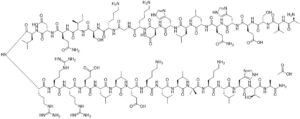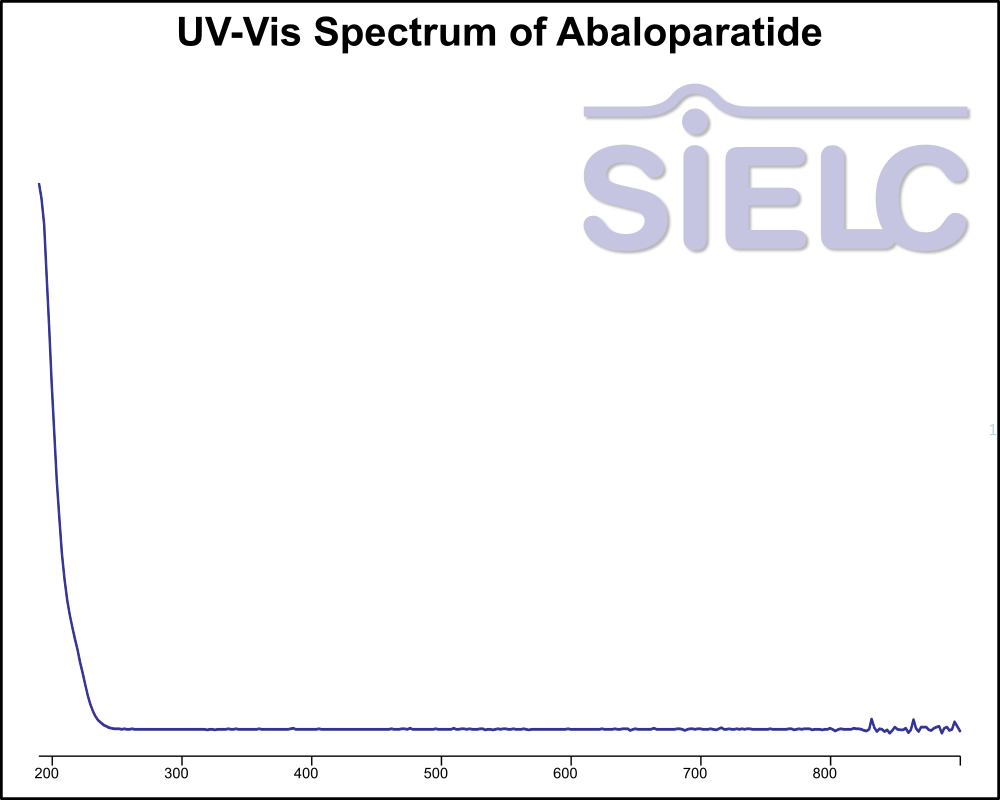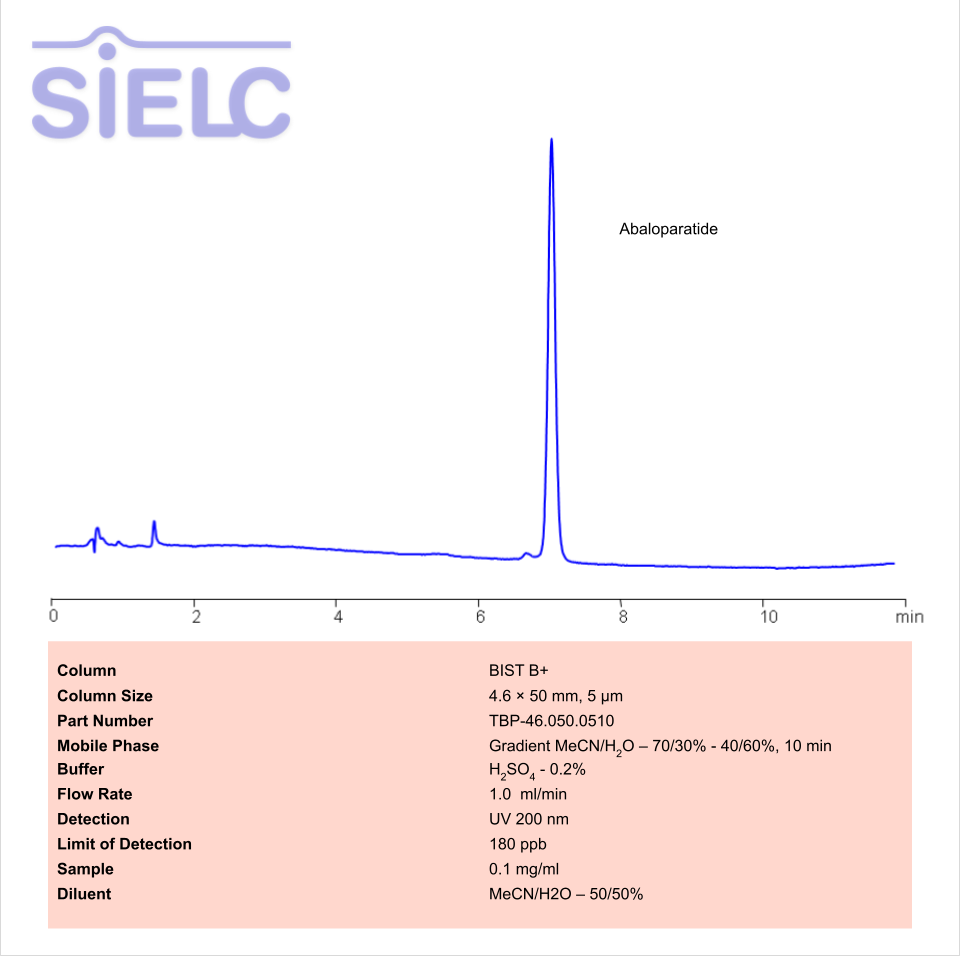
| CAS Number | 247062-33-5 |
|---|---|
| Molecular Formula | C174H300N56O49 |
| Molecular Weight | 3961 |
| InChI Key | BVISQZFBLRSESR-XSCWXTNMSA-N |
| LogP | -20.9 |
| Synonyms |
|
Applications:
HPLC Method for Analysis of Abaloparatide on BIST B+ Column
October 31, 2025
HPLC Method for Abaloparatide on BIST B+ by SIELC Technologies
High Performance Liquid Chromatography (HPLC) Method for Analysis of Abaloparatide
Abaloparatide is a 34-amino acid parathyroid hormone-related protein (PTHrP) analogue with the molecular formula C174H299N56O49. It is used to treat osteoporosis in postmenopausal women who are intolerant to other available osteoporosis therapy. It is also used to increase bone density in men with osteoporosis.
Abaloparatide can be retained and analyzed using the BIST B+ stationary phase column. The analysis utilizes an gradient method with a simple mobile phase consisting of water and acetonitrile (MeCN). Detection is performed using UV.
| Column | BIST B+, 4.6 x 50 mm, 5 µm, 300 A, dual ended |
| Mobile Phase | MeCN – 70-40% |
| Buffer | Sulfuric Acid |
| Flow Rate | 1.0 ml/min |
| Detection | UV 200 |
| LOD* UV | 180 ppb |
| Class of Compounds | Protein Analogue |
| Analyzing Compounds | Abaloparatide |
Application Column
BIST B+
Column Diameter: 4.6 mm
Column Length: 50 mm
Particle Size: 5 µm
Pore Size: 300 A
Column options: dual ended

UV-Vis Spectrum of Abaloparatide
October 31, 2025

If you are looking for optimized HPLC method to analyze Abaloparatide check our HPLC Applications library
For optimal results in HPLC analysis, it is recommended to measure absorbance at a wavelength that matches the absorption maximum of the compound(s) being analyzed. The UV spectrum shown can assist in selecting an appropriate wavelength for your analysis. Please note that certain mobile phases and buffers may block wavelengths below 230 nm, rendering absorbance measurement at these wavelengths ineffective. If detection below 230 nm is required, it is recommended to use acetonitrile and water as low UV-transparent mobile phases, with phosphoric acid and its salts, sulfuric acid, and TFA as buffers.
For some compounds, the UV-Vis Spectrum is affected by the pH of the mobile phase. The spectra presented here are measured with an acidic mobile phase that has a pH of 3 or lower.



